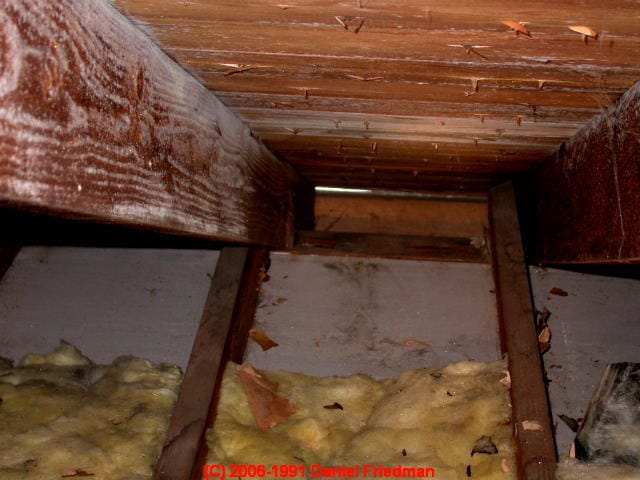How to fix ceiling condensation.
Ceiling no attic without drywall mold.
How to avoid condensation leaks attic mold insulation mold structural damage to roof framing when roof venting is not possible cathedral roof and knee wall insulation venting air path options in older homes hot roof designs.
Excess humidity can also cause mold growth on the ceiling even in a well insulated attic space.
Worries about the hot roof un vented cathedral ceiling designs how to.
When you have a ceiling water leak there is always the chance that the ceiling may fall due to the weight of the water and the loss of structural integrity in the ceiling material.
Take care of your attic hvac air ducts too.
Next take a look at your attic.
Water soaked drywall often will dry out fine if it gets proper ventilation.
If it is and you plan to provide heating and cooling to the finished attic space you need to remove.
But if after it dries the drywall feels loose or spongy to the touch it should be removed and patched in with a replacement piece of drywall.
If you can use a wide spackling knife and scrape the paint and if no mold shows at the lower layer then you do not need to replace just clean off the mold.
It s important to do a thorough inspection of the nearby area to determine if mold is present.
Improper ventilation and insulation of home attic space can produce.
Closing in the ceiling too quickly may trap moisture that can foster the growth of mold and mildew.
Warm air escaping from a duct into a cold attic can create condensation and encourage mold growth.
Under the right conditions mold can begin to grow in as little as 24 hours.
Mold can grow anywhere that there was water damage meaning in your drywall insulation and even in your floorboards and ceiling beams.
Suggestions for un vented or hard to vent building roof cavities.
That dark spot on your ceiling may be the result of more than just a ceiling water leak.
The 3rd potential cause is ghosting which is not actually mold though it can look very similar.
The attic floor which is the ceiling of the living space below often already is insulated.
Condensation on your ceiling can cause water damage and promote the growth of mold or mildew.
However if you find no end to the mold it is likely feeding on the drywall and the drywall needs to be removed completely.

